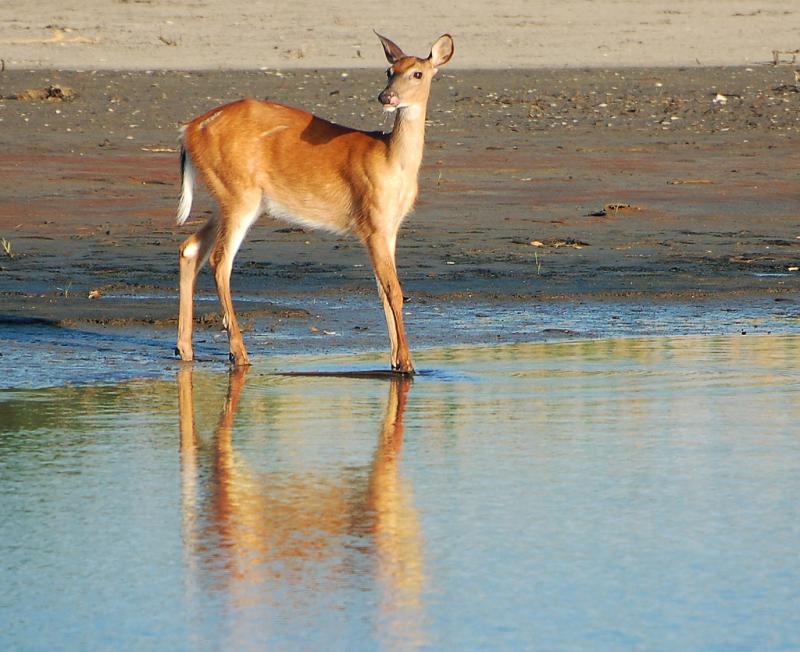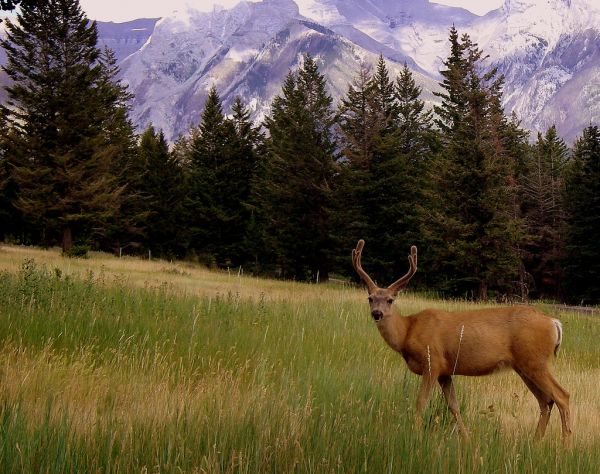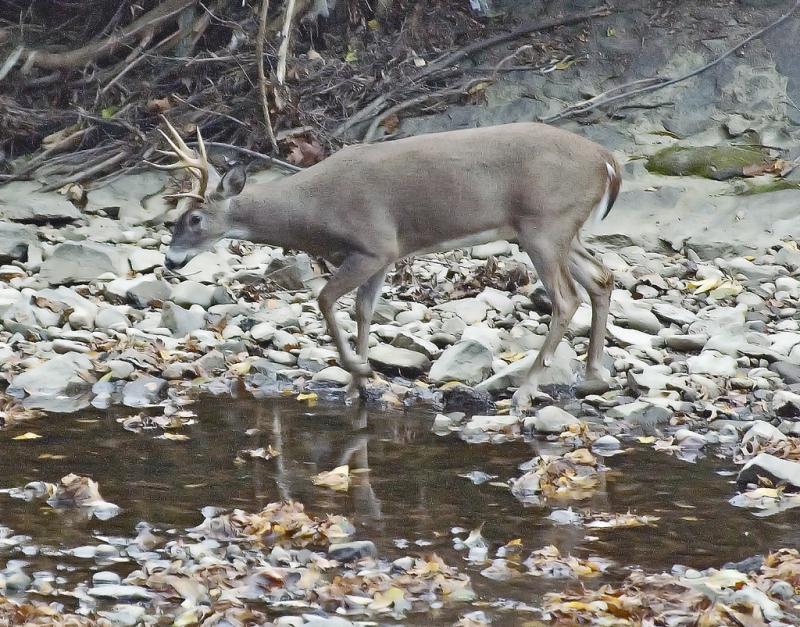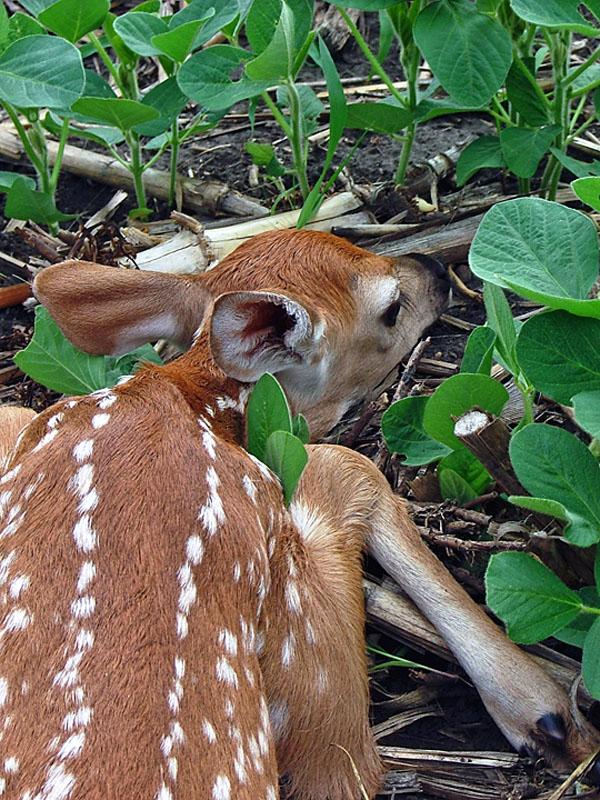Wildlife North America . com North American Animals - mamals, birds, reptiles, insects |
White-tailed Deer (Odocoileus virginianus)
White-tailed Deer at edge of a saltwater marsh Photograph by Tom McCarthy (cruadinx). Some rights reserved. (view image details) 
White-tailed deer near Tunnel Mountain, Banff Photograph by James Anderson. Some rights reserved. (view image details) 
Stag crossing creek at Rock Creek Park Photograph by Greg Mano. Some rights reserved. (view image details) 
White-tailed Deer fawn beside creek near Colfax, Illinois Photograph by T Lindenbaum. Some rights reserved. (view image details)
WHITE-TAILED DEER FACTS
DescriptionThe White-tailed deer is greyish in winter and reddish in summer. It has a band of white fur behind the nose and around the eyes, chin and throat. The insides of legs are white. White-tailed deer have scent glands on their hooves, and also on hind legs. Only the males have antlers which are shed in late winter and grow again in April or May. Fawns have white spots at birth, and these disappear by their first winter. Size Length 1.5m - 2m. Height at shoulder 80 - 100cm. Environment Forest, grassland, swamps, farmlands, brushy areas and deserts of southern Texas and Mexico. Food leaves, buds and twigs of shrubs and trees. In desert areas, plants such as yucca, prickly pear cactus and various tough shrubs are eaten. They feed on conifers in winter when other food is scarce. Breeding Usually two fawns are born in a litter (occasionally 3 or 4). They weight between 1.5 and 2.5kg at birth. Fawns are able to walk at birth and can feed on vegetation after a few days. They are weaned at about 6 weeks. Range Southern Canada and all of the mainland United States except two or three states in the west. Also throughout Central America to Bolivia. Classification
Relatives in same Genus Mule Deer (O. hemionus) Home | Mammals | Reptiles | Birds | Insects | Privacy Policy | Disclaimer | Contact Us |